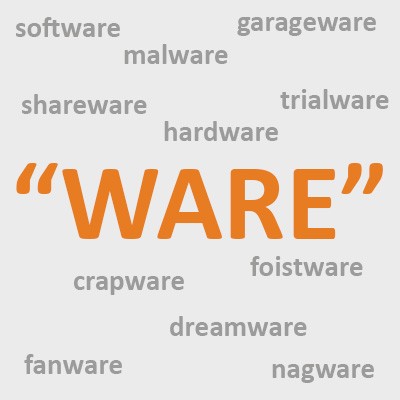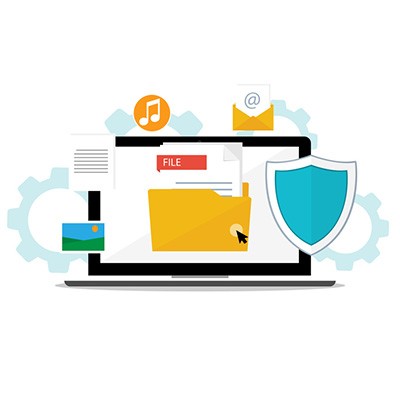NetWorthy Systems Blog
When you’re talking about something to do with a computer, you’re going to start hearing about some word that ends with “-ware.” You could probably list off a few yourself, but have you ever stopped to think about why they’re all described as “something-ware?” For this week’s Tech Term, we’ll take a peek at why we refer to things that way.
If you’ve been in business for a while, there are devices on your network that see little to no use. Even for the most frugal business, due to the fact that technology eventually winds up being arbitrary thanks to the continued development (and deployment) of more powerful solutions, there will always be situations where you have devices that do nothing but take up space. You can reduce the chances of this happening by finding the right IT for the job the first time, while sparingly implementing only IT solutions that will provide a return on your investment.
If your business experiences a technological failure, how many operations simply stop dead in their tracks until the problem is resolved? While it might seem like you have no control over your business’ technology (at least the issues that cause downtime), this is far from the truth. If you take action now, you can prevent issues from cropping up in the first place rather than reacting to them later, after they have already caused considerable problems for your business.
Wireless Internet access for a user’s devices isn’t just a luxury these days--it’s expected. If the Wi-Fi drops out for any reason at all, chaos strikes, rendering any ability to stream content or access the Internet a moot point. This is particularly the case for businesses that have technology solutions reliant on wireless access. How can you make sure your wireless network is as strong and reliable as possible?
With so many people depending on the Internet for a litany of reasons, there might not be the general acknowledgment of just how powerful the ubiquitous use of the Internet really is for businesses. From the storage and redundancy of business’ data to virtualized computing platforms to browser-based interfaces that provide access to productivity and communications software, today’s Internet is filled with solutions for the modern business.
Data backup can be the difference between a business that fails and a business that succeeds. After all, if an organization suffers from a data loss incident so bad that it has to deploy its data backup, it wouldn’t be able to survive without it. With a data backup and disaster solution, you can ensure business continuity. But what does this kind of system need in order to succeed, and how can you make sure your organization benefits from a data backup system in place?
There is always going to be user error in the workplace. Even the best workers make mistakes sometimes. You naturally want to reduce these occurrences as often as possible, but for the purposes of training and whatnot, you want to assume the worst: that any worker, even the most dedicated veteran, could potentially make a business-ending mistake. Thankfully, there are ways you can make sure this doesn’t happen for your business.
It can be easy, with all the threats covered in the news, to assume that the biggest dangers to your business all come from the outside. This is a dangerous mistake, as there are plenty of vulnerabilities that originate from within your organization, making it easier for outside threats to come in, if not being bigger threats in and of themselves. Below, we’ll review some of the biggest, mostly internal dangers that your business may face.
More small businesses today depend on their IT. If that technology isn’t working as intended, it can really stymie an organization’s ability to be effective. Our strategy of managed IT support and services can do quite a bit towards keeping a business running efficiently. Today, we’ll take a look at managed IT to see how proactive monitoring can deliver enhanced efficiency to businesses.
With data looked on as more of an asset than ever organizations are finding that their data backup and recovery system needs to be comprehensive. By knowing more about backup and recovery, you stand to be able to plan the solution to meet your company’s needs. Today, we will look at the different types of data backup and introduce you to four terms you need to understand.
For the modern small business owner, there are situations that you are forced to deal with that are frustrating; but, in the course of doing business would be considered normal. Then there are other situations that arise where, every step of the way, the figurative floor falls out from under your feet and you are forced to react quickly. Some of these circumstances can be pretty spooky for your business. This Halloween, we’ve decided to outline three scary circumstances your business may have to deal with, and how to keep your cool.
Server units--you’ll find them in most offices out there, but they are all used for different purposes. Since well-maintained data is so essential to the success of many organizations, it’s important to keep your server units in proper working order. Today we’ll discuss the best ways to make sure your servers are in peak performance.
If you look around your company, there’s a good chance that it has a lot of technology that you completely take for granted. No matter if you run a small retail store, a factory, or a multi-location office, your business needs IT to function properly. Today, we will take a look into several ways your organization can use technology to improve your business.
Once thought to just be a cool feature of the Internet--or the entirety of the Internet to your Great Aunt Maddie--instant messaging has a long history on the web. In fact, one could argue that it was the first great Internet-based application. Today, we take a look back at the history of Instant Messaging and how your organization can use it to create a better business.
The cloud is such an important part of today’s business environment that most organizations use it to some extent, even if it’s just for basic storage needs. However, the cloud needs to be properly maintained, starting with the way you secure your cloud services. Take a moment to ask yourself if your cloud--whether it’s hosted on-site or by a provider--is safe and secure.
We all have our favorite websites to visit, as well as those we often have to visit to fulfill our responsibilities. As a result, it isn’t uncommon for us to try and access the same websites on both a desktop workstation and a mobile device, but some websites work better than others while trying this. This is because of something called responsive web design, which we’ll review below for our weekly Tech Term.




















